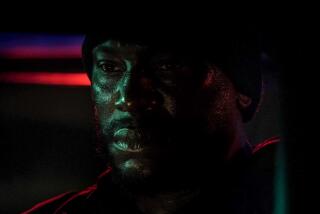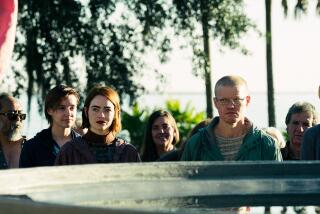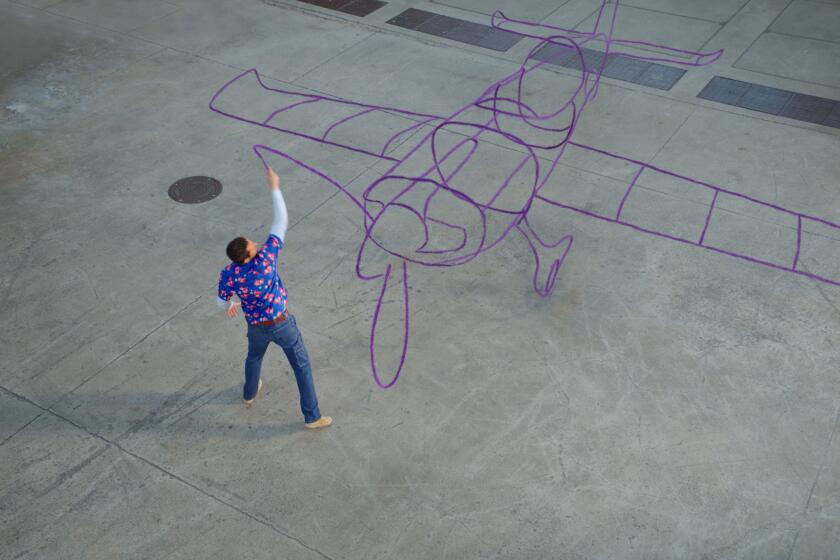Review: ‘Rififi’ screening a welcome return of cracking good classic
Ever since its release in 1955, the French crime thriller “Rififi” has been celebrated for the 30-minute jewel heist segment that could be the finest thing of its kind ever put on film.
But this hard-guy classic, heralded by then-critic Francois Truffaut as “the best film noir I have ever seen,” has always had a lot more going for it than that exceptional sequence.
In fact, those other elements, the film’s gift for mood, for character, for portraying Paris in a particularly beautiful way, are key to why it remains a driving, compelling piece of work that holds audiences today as much as it ever did.
SIGN UP for the free Indie Focus movies newsletter >>
Directed by Jules Dassin and thick with the air of human frailty and fatalistic doom, “Rififi” is showing (for the first time in a digital version) for a week at Laemmle’s Royal in West Los Angeles. It’s great to have it back in town.
Dassin was both ideal and unlikely as this film’s director. Given how central the look of Paris became to “Rififi’s” accomplishment, Dassin’s success with conveying the visual ambience of London (“Night and the City”) as well as New York (“Naked City”) were points in his favor.
But Dassin was an American with no more than an adequate command of French. More than that, he was under the thumb of the Hollywood blacklist and that compromised his ability to work, even in Europe.
Because the book was rife with Parisian underworld slang, some of which author Auguste le Breton apparently made up, Dassin was also buffaloed by “Du Rififi Chez les Hommes,” the novel the film is based on. (The word “Rififi,” coined by Le Breton, refers to a rough and tumble clash.)
Dassin did a rewrite (he claimed it took him only six days) that came out emphasizing the film’s characters, turning them into people who were flesh and blood as well as criminal archetypes. And because the production didn’t have the money to hire identifiable stars, the lack of familiar faces adds to “Rififi’s” verisimilitude.
The film’s lawbreakers are laconic craftsmen, unapologetic about their profession, who took pride in the things they could do well. The time “Rififi” spends fleshing out these individuals pays off in how involved we get in the aftermath of their crime.
Leader of the pack is the sepulchral Tony le Stephanois (Jean Servais), just back on the Parisian streets after five years inside that ruined his health and left him with an unwavering stare.
Tony’s best pal, Joe the Swede (Carl Mohner), is a married man with a small son, which is one reason why Tony took the rap all those years ago and didn’t even think of squealing. The exacting codes of the underworld, the things honor insists you do, play a big part in everyone’s actions.
Tony, Joe and a carefree Italian named Mario Farrati (Robert Manuel) hatch a plan to break into the posh Mappin & Webb jewelry store near the Place Vendome, a place with “more alarms than a fire house.”
To actually crack the safe, they need the help of the womanizing Cesar the Milanese (Dassin himself, who started as an actor in the Yiddish theater and here uses the stage name Perlo Vita). “They say,” Mario cracks, “there’s not a safe that can resist Cesar or a woman Cesar can resist.”
The planning for this job is meticulous, down to experiments on a duplicate of the alarm system and the use of a stopwatch to time the movements of all local tradespeople. But all that is nothing compared with the care taken with the robbery itself.
In a sequence that made “Rififi’s” reputation and is still a model of tension and precision, Dassin spends a quarter of the film’s running time on the actual burglary, a wordless (though it makes good use of sound effects) half-hour that racks the nerves and provides a master class in breaking and entering as well as filmmaking. (It was so good it called forth a marvelous parody, the Italian “Big Deal on Madonna Street,” directed by the deft Mario Monicelli.)
Rather than grinding to a halt, “Rififi” gets more interesting after the burglary, as intricate cat and mouse games play out and inevitable human weaknesses take their toll. When Truffaut said that this film combines “the documentary approach with lyricism,” he hit it just right. More than that, this film proves for not the last time that it’s easier to break into a safe than fathom the mysteries of the human heart.
------------
‘Rififi’
MPAA rating: None
Running time: 1 hour, 58 minutes
Playing: Laemmle’s Royal, West Los Angeles
More to Read
Only good movies
Get the Indie Focus newsletter, Mark Olsen's weekly guide to the world of cinema.
You may occasionally receive promotional content from the Los Angeles Times.











